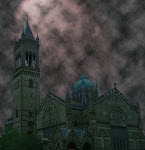Texturing Techniques and Guidelines:
This simple tutorial is designed to assist the novice builders in Second Life.
A Novice Builder is an individual having a solid understanding of basic prim shaping, elementary texturing and basic application of scripts into a build format.
If you do not as of yet have these elementary skills, please look at SL Wiki for tutorials and information to assist you. Also doing a search in the SL search tab for Building classes, there you will find several good building classes you can attend in world to learn the basics.
~~~~~~~~~
Texturing a Basic Prim:
The first place to start when discussing texturing is with a Prim. As you know a prim is the basic building block we all use in SL. But when a texture is added the transformation can be incredible, from a piece of plywood to something wonderful to behold.
All prims are created equally its what you do as a builder with their shapes and the textures you apply to the prim that determines what will become of it. As you travel through SL you will see many different interpretations of certain styles of buildings castles, houses, stores and so on. The ones that stand out from the crowd are the ones that are textured properly and give the illusion of either being realistic looking or have crossed the fantasy line and are incredible to see. The one thing that allows these builds to stand out is the attention to details and the application of a texture properly to a prim.
The Basic rule I remember when Texturing is the following one:
Prim size conformity, complete texture coverage and proper stretch allow for a realistic look.
What this means is the size of the prims and the application of textures properly to the prims makes or breaks a build. Have you ever looked at a set of stairs or the edge of a table of chair and the small side of the prim does not look right. The texture may look like a long drawn out set of thin lines, this is caused when one set of texture dimensions are applied to the total prim and it is not a square and equal on all sides. This is caused because the texture on the prim sides has the wrong texture stretch settings on them.
Getting textures to look proper across the face of multiple prims can be a challenge if the size of the prims (the x-y-z axis) are not the same size when the faces are parallel and the same dimensions. The texture will size itself to the size of the prim so this will cause the texture to look different on prims of different sizes.
Finally we all do have X-ray vision in SL so a bare prim can be seen and when lining up walls or floors and only texturing the face of the prim showing. Will cause it to have glimmer if the sides of the prims not showing are not textured.
As in all good design the odd numbers seem to look best when applying textures to prims. A modern designer will tell you to place 3 or 5 or 7 objects as a placement of objects, these same numbers work best when stretching textures across prims. The larger the prim face the higher the amount of repeats you will have.
I have found with the edge of cylinders and cut circles that the setting of 15 repeats works very well.
Also don't be afraid to use settings below the number 1, such as 0.3, 0.5,0.7 and so on for the side of prims that are not very large in height or width. Then apply the proper setting to stretch the texture across the long axis face of this prim.
Subscribe to:
Post Comments (Atom)


No comments:
Post a Comment